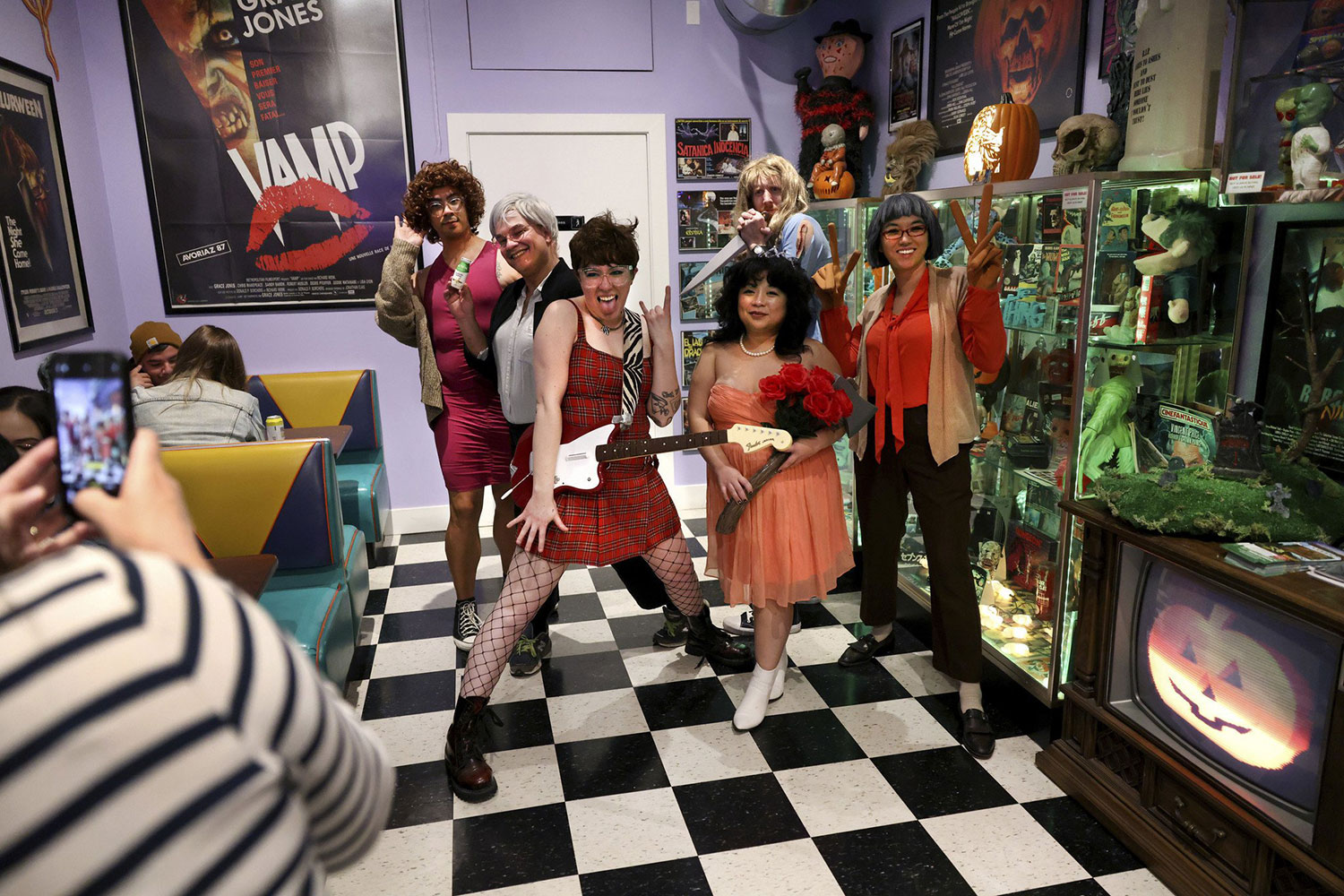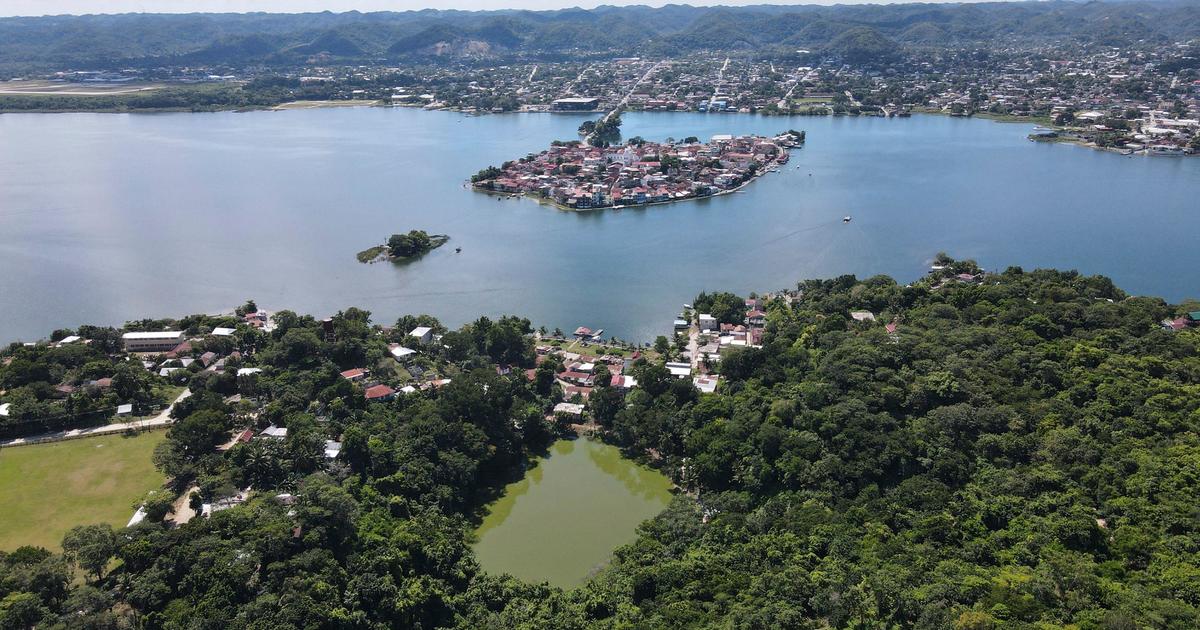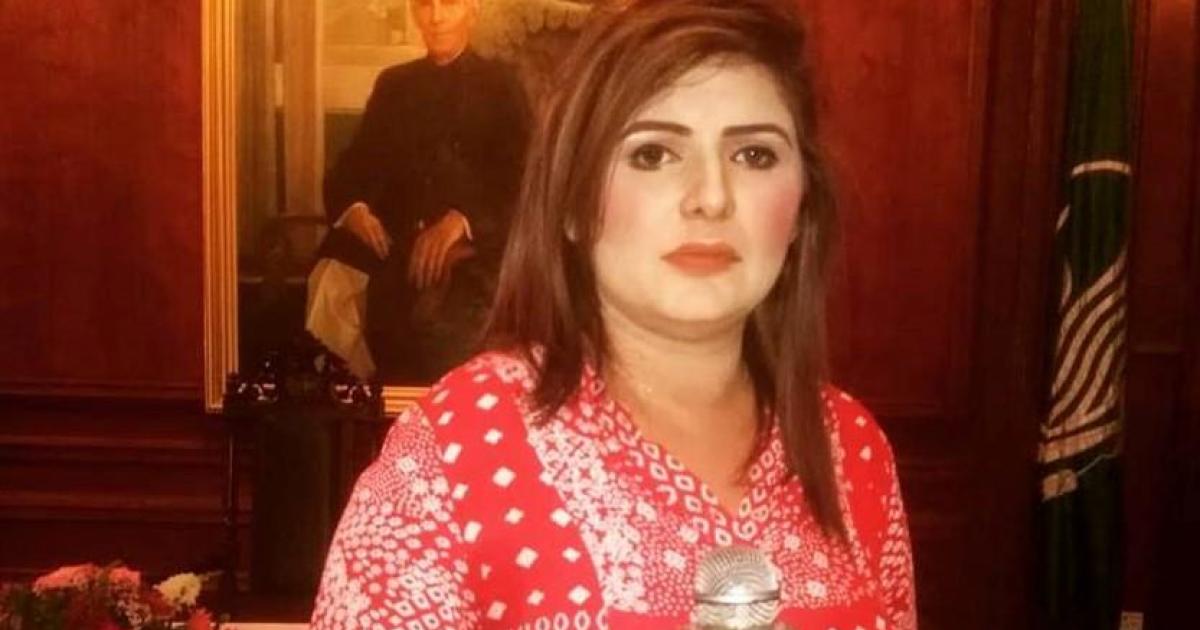Russia, the war, and childhood fears rekindled

By GARY FIELDS – Associated Press
Those of us of a certain age remember the threat.
The 1960s were a time of internal turmoil, yes. But they also came with a darker, existential threat: atomic bombs, intercontinental missiles, thermonuclear war, annihilation. The buzzwords of destruction, in which the Soviet Union is considered the architect of it all.
Nuclear war has been a shadow in our lives. now it seems those shadows are back.
War in Ukraineespecially the president of Russia Vladimir Putin’s references to Moscow’s nuclear arsenal — and the global debate over nuclear weapons — awakened memories I thought had been buried. And every day that Russia’s conventional military efforts seem to have ceased, my memories become more vivid.
People also read…
Families could buy bomb shelters and students dutifully practiced duck and cover – hiding under school desks as if that could save us. Two 1964 films, “Safety of Denial” and “Doctor Strangelove,” had similar plots—a mistaken order by the U.S. to bomb the USSR—but only the latter was shown for laughs. 1970’s Under the Planet of the Apes gave us the grim aftermath of the atomic bomb.
A voiceover said it all: “In one of the countless billions of galaxies in the universe lies a medium-sized star. And one of its satellites, a green and insignificant planet, is now dead.”
Some of us in those years – “nuclear brats” with military families who trained to intercept Russian bombers and flew nuclear cargo – lived with the possibility of nuclear weapons every day. We hoped that the possible would not become probable.
My father’s Air Force Squadron, the 87th, flew a McDonnell F101B Voodoo out of Clinton County Air Force Base in Wilmington, Ohio. The fighter jets carried two Djinns. These were unguided air-to-air missiles. Nuclear.
The task of the squadron was to intercept Russian bombers loaded with nuclear bombs if they tried to attack the United States. Interceptors would shoot from the “Giants” on the incoming formation. At 1.5 kilotons, it wasn’t a large nuclear weapon, but we knew it was a nuclear weapon. Two of them had the same explosive power as one of the giant air raids of World War II with hundreds of bombers.
As a kid, I knew, or thought I knew, where the nuclear weapons were on the base. It wasn’t really a secret. Bumps were raised near the alarm hangers. The volume of security was something you couldn’t miss. The German shepherds that patrolled there with the handlers, behind the placards about the intruders who had been shot, were clearly not pets.
Somewhere in America, among the amber waves of grain, we knew there were also missile mines firing more monstrous payloads. They also knew about the bombers of the Strategic Aviation. I guess other kids at other airfields saw the same mounds and planes that disturbed us.
The command center that controlled the fighters was called a “mole hole” – think of the miniature Cheyenne Mountain from War Games, the 1983 Cold War sci-fi film. In one of the massive rooms was a map of the world with lights. I now know that these were US installations and their counterparts in the then Soviet Union. It was underground and part of a larger complex that we didn’t get to explore.
And yes, there was a red phone.
In the movies or in real life, many people have seen fighter jets take off during routine training missions. Ground and flight crews inspect the aircraft. Fighter jet launches were just like that, but deployed at super speed. Everyone ran. You only had to see one fight to know the difference.
It all came back to haunt me in recent months Putin’s saber rattling. I thought about missile mines, distress planes and the Mirror. In my youth, the planes were 24-hour, along with the Looking Glass, airborne command posts that were in the air 24 hours a day and could order a response if ground centers were destroyed.
The reason we were at a small air base in Ohio was part of the threat. The base, located about an hour north of Cincinnati, was a detachment of her headquarters at what was then Lockbourne Air Force Base near Columbus. The squadrons were dispersed. The reasoning was as follows: if the enemy struck the main base, his forces would be diverted to other airfields that would survive and either continue to defend the United States or retaliate.
If I remember correctly, the community also had a Nike missile defense site that provided air defense for the base. One of the army officers stationed there and my father used to play ping pong regularly.
Our social group was, in fact, primarily squadron members and their families. We heard over the years that one of the wives, who was Japanese, was 12 years old during one of the atomic bombings in Japan. She didn’t talk about it, at least not with the kids. One night, as I was eavesdropping before I was driven to bed, I heard her say how bright the explosion was.
Because one of my favorite places was Dayton Air Force Museum, I saw a life-size mock-up of the bombs that fell on her country. There were also pictures of the consequences. When I asked my dad about the destruction and how many bombs it took to wipe out the city, he only said one.
I asked him if the bombs our enemies had were as big The little boy and the fat man, the bombs that destroyed Hiroshima and Nagasaki. He said that their bombs and ours are much bigger now. I guess he caught my expression as he added soothingly that it was his job and the job of men and women like him to make sure the bombs didn’t fall on us.
I wanted to believe him. But the museum also had models of our long-range missiles, and I knew that no Voodoo could shoot down anything like that. And if that happened, wouldn’t we be blown up?
I did not tell my father about my fears. He was not known for being encouraging; today we would call it crude and fatalistic.
However, he and his mother planned for emergencies. They wanted a house with a basement, and they showed me where the safest place in the basement is, away from the windows. We also always had a rack or two with cans, and kept a can knife and cutlery there. Mom never talked about why she did it, but she maintained a streak of survival for the rest of her life.
I’m not sure if they were trying to convince me or themselves. After seeing the Little Boy and the Fat Boy and the rockets in the museum, I always thought that the only way to stay alive was if no one ever fired one of the rockets or dropped one of the bombs – again.
I don’t know if my friends, especially military children, felt the same way back then. Yet I suspect they knew what I did – that we were one truly bright light from nothingness.
Eventually we moved to other bases. My father retired and moved back to his native Louisiana, away from the mounds and launch pads. And when I became an adult, I knew there were enough nukes floating around to destroy the world several times over, so it didn’t matter if I couldn’t see where they were stored.
One film convincingly convinced this. The Next Day, a 1983 TV movie, featured a full-scale missile exchange between the United States and the Soviet Union and depicted the aftermath. Dad and I watched together. He smoked his ever-present Pall Malls and confirmed that yes, it seemed accurate.
By the 1980s, I was a reporter in Shreveport, Louisiana, just off I-20 and minutes from the end of the runway at Barksdale Air Force Base. We agreed that there were nuclear-armed bombers there and that several ICBMs had undoubtedly been launched at the base. If the alert ever comes, I plan to stop at a convenience store, buy the best bottle of booze I can, and go park outside the base and wait. I had no intention of staying around for the consequences.
When the Soviet Union collapsed, George W. Bush took the bombers off 24/7 alert. At the same time, the idea of planet-killing thermonuclear exchange left my mind. Until this year, before Ukraine, before Putin.
Now, as these childhood images replay in my head, I wonder if my daughters and grandchildren will live under the same shadow that hung over the people of my generation. More importantly, will the use of nuclear weapons remain only a possibility? Or are we once again one really bright light from oblivion?
Gary Fields covers the election process and government for The Associated Press. Follow him on Twitter at http://twitter.com/GaryEFields2
Copyright 2022 The Associated Press. All rights reserved. This material may not be published, broadcast, copied or distributed without permission.
https://herald-review.com/lifestyles/nuclear-memories-russia-war-and-childhood-fears-rekindled/article_76e4fe80-23b5-560f-bcc0-dbe022fd2e17.html




